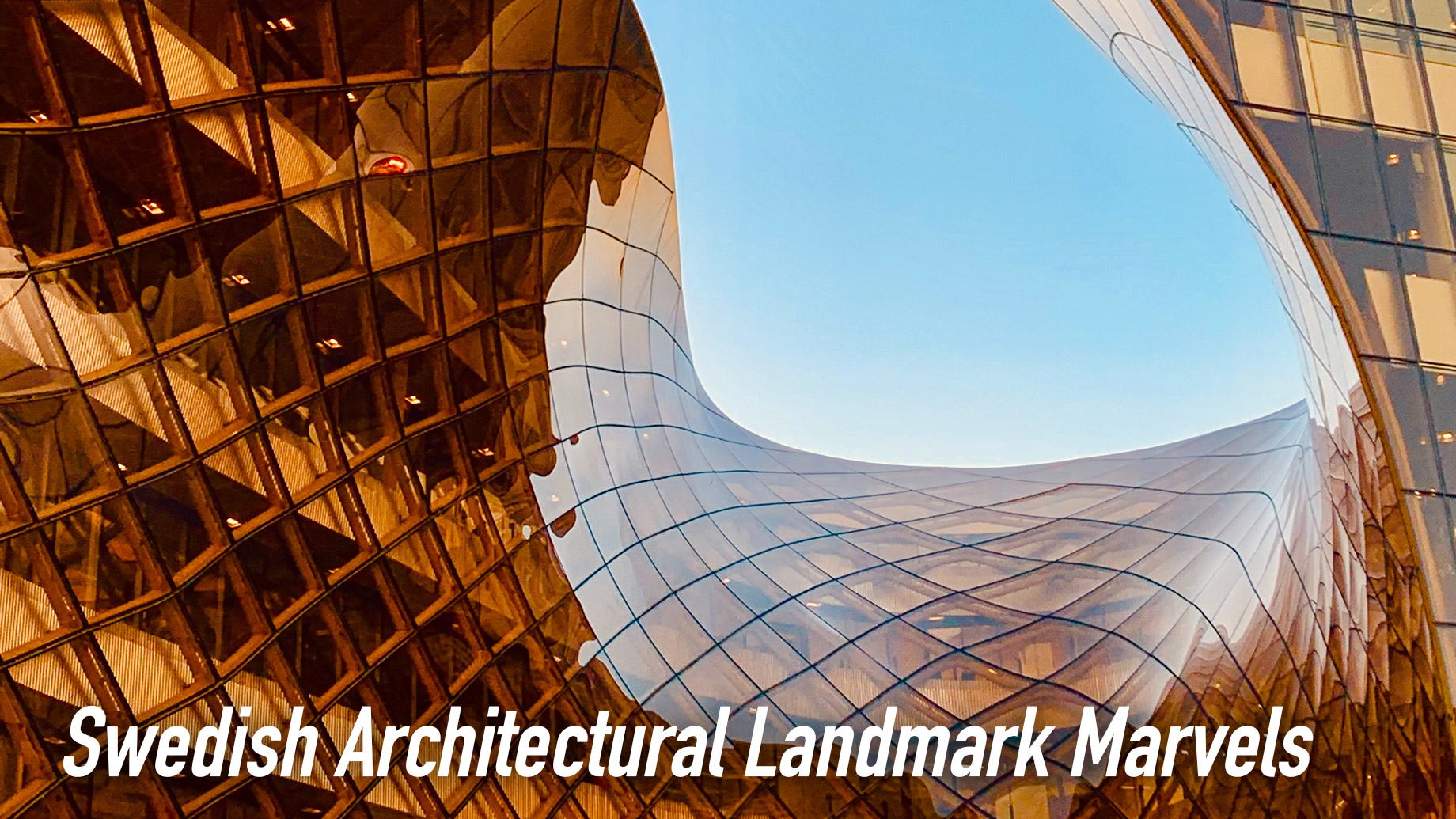
Sweden is a country known for its modern Scandinavian architecture and is thus home to some of the world’s most remarkable architectural landmarks. From centuries-old palaces to modern, sustainable structures, Swedish architecture showcases a unique blend of history, innovation, and environmental consciousness. In this article, we embark on a journey through Sweden’s architectural wonders
Historical Buildings: Timeless Elegance
Sweden’s historical buildings are a testament to the country’s rich cultural heritage and the enduring beauty of classic architectural styles. One of the most iconic examples is the Drottningholm Palace, a 17th-century royal residence located on the outskirts of Stockholm. This UNESCO World Heritage Site is a masterpiece of baroque and rococo architecture, featuring ornate facades, sprawling gardens, and a whimsical Chinese Pavilion. The palace’s opulent interiors, adorned with intricate frescoes, gilded furnishings, and priceless works of art, offer visitors a glimpse into the lavish lifestyle of Sweden’s monarchs.
Another historical gem is Uppsala Cathedral, the largest cathedral in Scandinavia and a prime example of Gothic architecture. Construction on this magnificent structure began in the 13th century and continued for nearly two centuries, resulting in a breathtaking edifice with towering spires, intricate stone carvings, and stunning stained-glass windows. The cathedral’s interior is equally impressive, with soaring vaulted ceilings, ornate chapels, and the tombs of Swedish royalty and notable figures, such as botanist Carl Linnaeus.
Other notable historical landmarks include the Kalmar Castle, a 12th-century fortress that played a crucial role in Swedish history, and the Vadstena Abbey, a former monastery that now serves as a museum and cultural center. These buildings not only showcase the skill and artistry of their creators but also provide a tangible link to Sweden’s past, allowing visitors to experience the country’s rich history firsthand.
Modern Structures: Pushing Boundaries
While Sweden cherishes its historical architecture, the country is also at the forefront of modern architectural design. Swedish architects have embraced innovative materials, cutting-edge technologies, and bold, unconventional forms to create structures that push the boundaries of what is possible. The Turning Torso in Malmö is a prime example of this forward-thinking approach. Designed by renowned Spanish architect Santiago Calatrava, this 190-meter-tall skyscraper is the tallest building in Scandinavia and features a unique, twisting design that seems to defy gravity. The building’s nine cubes, each rotated 90 degrees from the one below, create a dynamic, sculptural form that has become an iconic symbol of Malmö’s modern skyline.
Another example of Sweden’s modern architectural prowess is the Karolinska Institute Science Park in Stockholm. This state-of-the-art research facility, designed by Swedish firm Tengbom Architects, features a striking glass and steel exterior that reflects the institute’s commitment to scientific advancement and innovation. The building’s open, flexible spaces and collaborative environments are designed to foster interdisciplinary research and encourage the exchange of ideas among scientists from various fields.
Other notable modern landmarks include the Ericsson Globe, the largest hemispherical building in the world, and the Emporia shopping center in Malmö, which features a stunning, undulating glass facade that evokes the movement of the nearby sea. These structures not only showcase Sweden’s architectural ingenuity but also serve as a testament to the country’s commitment to progress and innovation.
Sustainable Architecture: Eco-Friendly Marvels
In addition to its historical and modern architectural achievements, Sweden is also a global leader in sustainable design. Swedish architects have long recognized the importance of creating buildings that minimize their environmental impact and promote the well-being of their occupants. The Stockholm Waterfront Congress Centre is a shining example of this eco-friendly approach. This LEED Gold-certified building features a host of sustainable design elements, including a green roof, solar panels, and a sophisticated energy management system that reduces its carbon footprint. The center’s stunning glass facade not only provides breathtaking views of the city but also allows natural light to flood the interior, reducing the need for artificial lighting and creating a more pleasant, productive environment for visitors and staff alike.
Another example of Sweden’s commitment to sustainable architecture is the Liselund Slot, a 19th-century manor house on the island of Møn that has been recently renovated using eco-friendly materials and techniques. The renovation project, led by Danish architecture firm Praksis Arkitekter, sought to preserve the manor’s historical character while incorporating modern, sustainable features. The use of local, renewable materials, energy-efficient systems, and green spaces surrounding the manor demonstrate a harmonious blend of heritage and environmental consciousness.
Other notable sustainable landmarks include the Väla Gård office building in Helsingborg, which features a living green facade that helps regulate the building’s temperature and improve air quality, and the Naturum Vattenriket visitor center in Kristianstad, which showcases the beauty and ecological importance of the surrounding wetlands through its eco-friendly design and educational exhibits.
Conclusion
Sweden’s architectural landmarks are a testament to the country’s rich history, innovative spirit, and commitment to sustainability. From the grandeur of historical palaces to the boldness of modern skyscrapers and the eco-friendliness of sustainable designs, Swedish architecture continues to inspire and captivate. These remarkable structures not only enhance the beauty of Sweden’s cities but also serve as a reminder of the importance of preserving the past, embracing the future, and building a greener world for generations to come. As Sweden continues to push the boundaries of architectural design, we can look forward to even more stunning, sustainable, and innovative landmarks that will shape the country’s built environment for years to come.